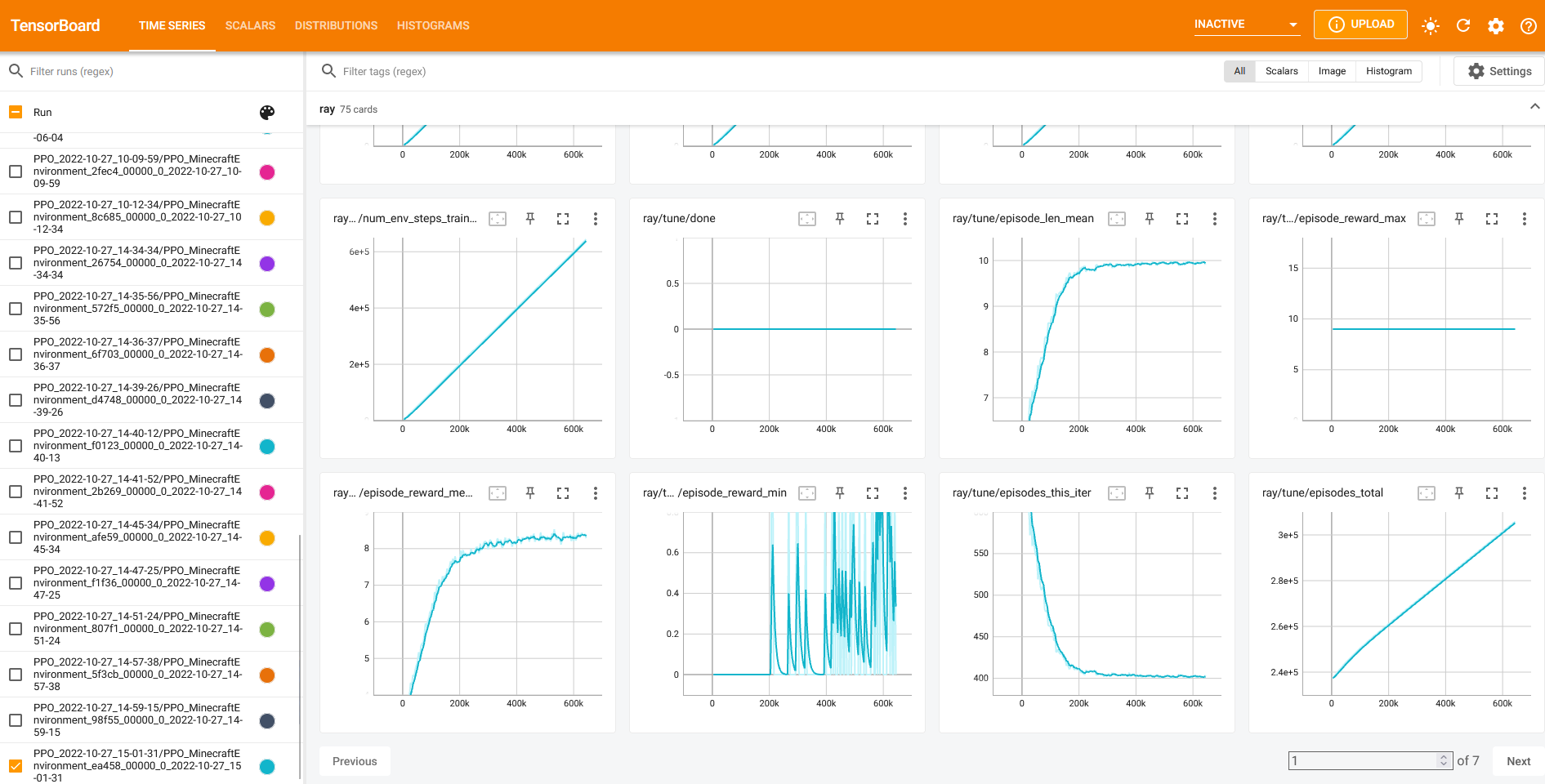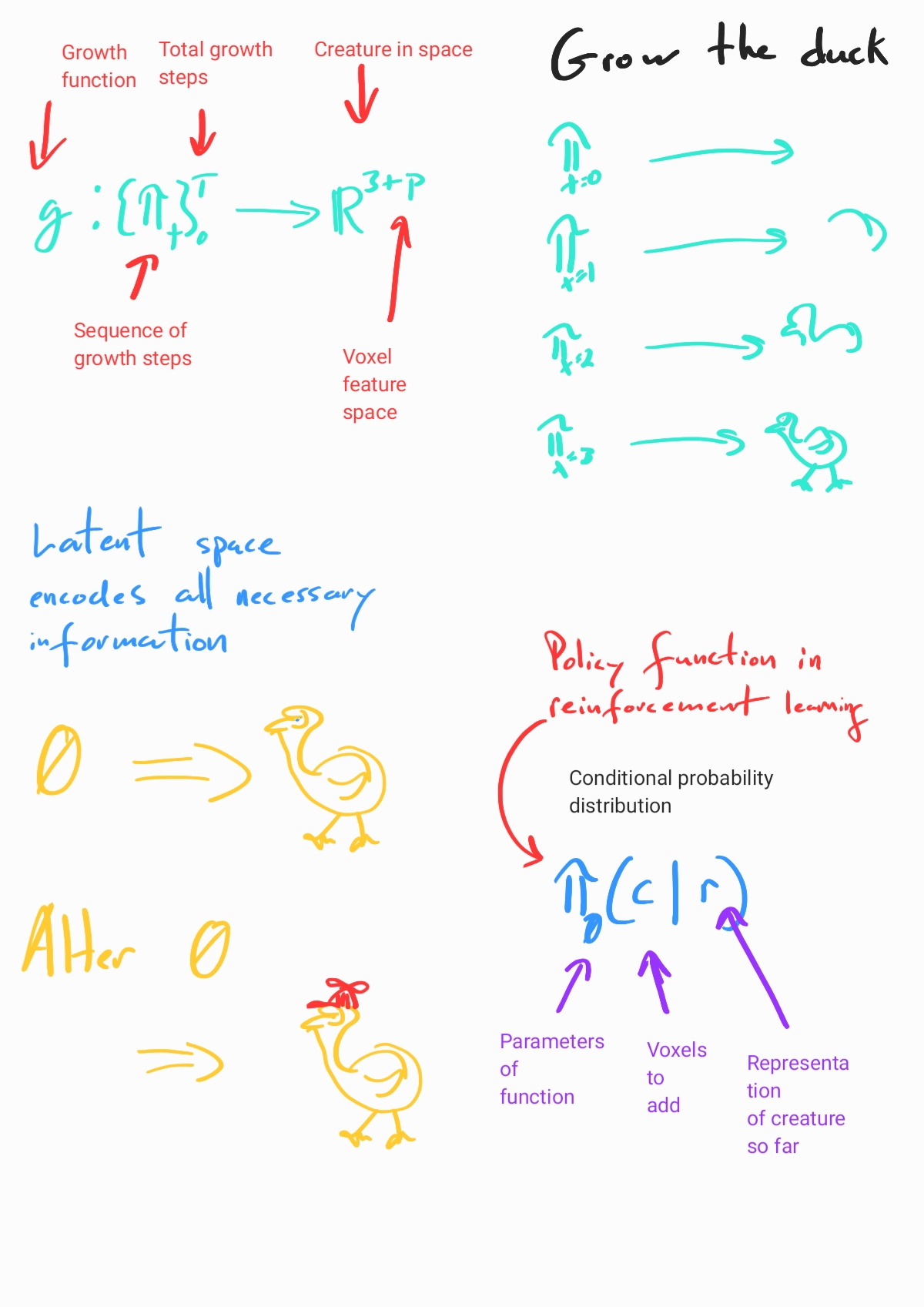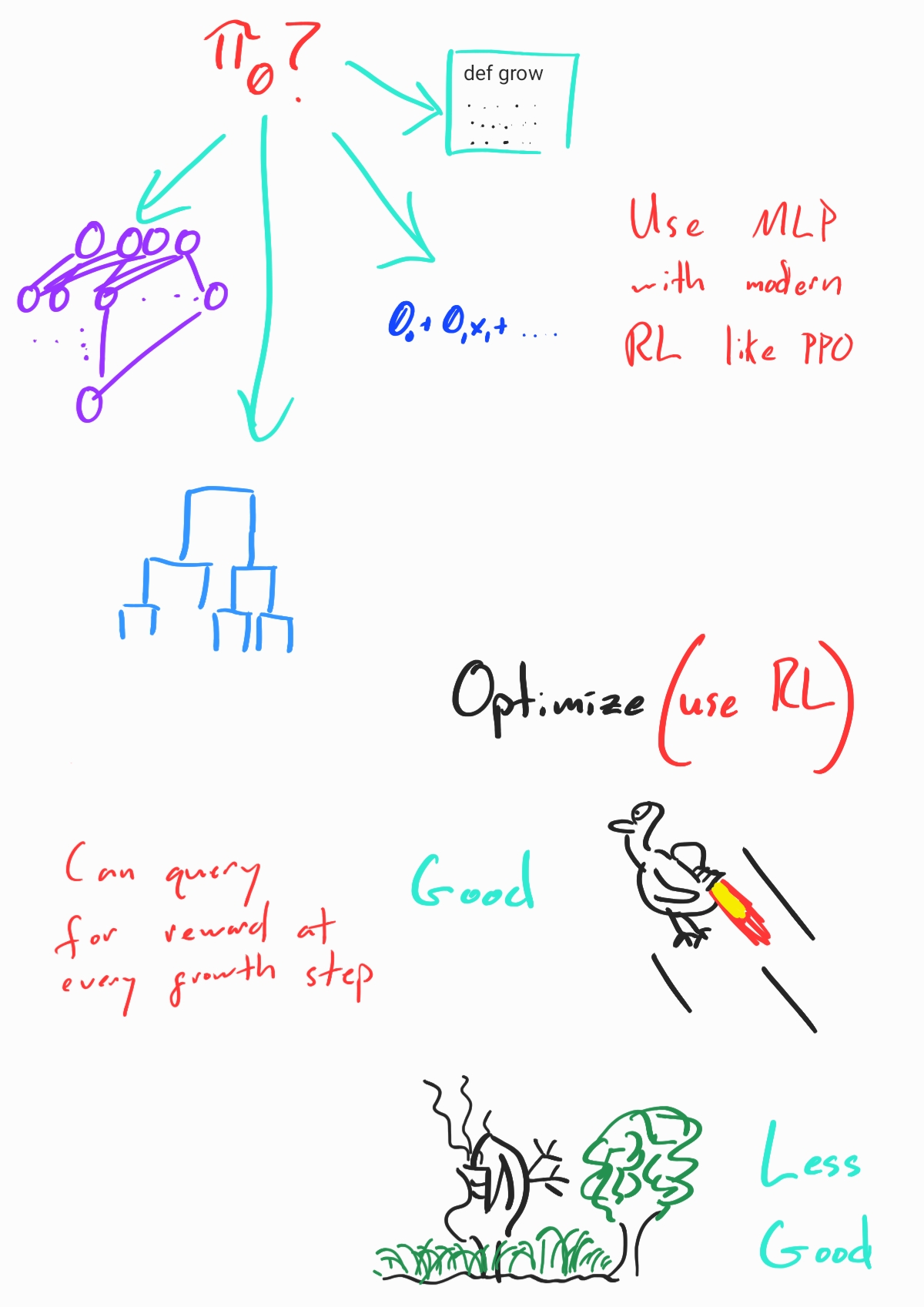Desktop.2022.11.13.-.10.59.18.01.mp4
Sea lanterns searching for glowstone
Growing virtual creatures is really fun [1]. However optimizing them in a physics engine in three dimensions is (as of 2022) pretty time consuming even on a powerful desktop computer. Science is limited by creativity, technical expertise, and cycles. To address the later, this package includes a pseudo-realistic environment: Minecraft [2], to enable anyone with a fairly modern computer to grow virtual creatures for fun and perhaps, to test hypothesizes.
Minecraft is a very good looking gridworld with a few notable advantages:
- Some blocks, like sand and water, respond to physics.
- The world is procedurally generated, providing an endless landscape of random environments.
- Multi-agent environments are supported by default.
So, although the curious individual may not be able to simulate a robot to be transferred to our world, a great deal can be explored and tested.
A primary goal of this package is to be standardized, extensible, and modular: many of the code bases I have come across couple a growth encoding with an optimization algorithm, limiting their application and testability. To that end the growth function and Ray's RLlib are completely independent; tied together only in the minecraft environment class following Open AI's Gym standard. You can replace the growth function with anything that returns an encoding you can convert to blocks (I'd like to see Compositional Pattern Producing Networks [3], for example) and write your own environment. In the same vein Ray gives you a robust selection of gradient and non-gradient based optimization algorithms to choose from, the ability to scale, and standardized logging and experiment tracking with MLFlow and Tensorboard.
My hope is that this package enables any company, university, and especially individuals to implement one, two, or all of a:
- Growth encoding
- Environment
- Optimizer
to test hypothesizes or just mess around, with something that will work on a standard desktop but can be scaled to a high performance computing cluster.
glhf.
Roughly speaking, there are three things that tie this package together.
- The Minecraft server.
- A Minecraft environment which extends OpenAI's Gym Environment and makes use of a growth function (unique to this package) to decide what to grow.
- Ray's RLlib for scalable optimization and logging.
Metrics are captured by Ray in /tmp/[expname] where expname is specified in the run configuration file, in the run function, by the parameter "name". You'll need to spend some time learning the Ray framework to become comfortable with this and other parameter choices governing the optimization process. The easiest way to view the metrics is to use Tensorboard and will be described in the example below. Here's a pretty picture:
I've summarized the idea of the conditional growth function in a few images below. The idea is as follow:
The growth of a creature can be broken down into an ordered sequence of steps. At each step, the optimizer has access to a state describing the creature and / or environment. Using this information a configuration of voxels is chosen (for example, by selecting the voxel configuration with the maximum probability) to be added to the current growing voxel. Voxels are stored in a queue and are thus grown breadth-first.
The above process boils down to the breadth-first application of the conditional probability of a voxel configuration given a state. Thus the beadth-first voxel selection process coupled with the growth function results in a creature of potentially infinite voxels: the integral of the growth function over time and space. My hope is that self-repeating structures will be observed and built by the growth function, providing a genommic encoding which can be thought of as a compressed representation of a creature.
Desktop.2022.11.13.-.11.04.52.02.mp4
Navigating obstacles
In this example we will grow a creature out of sea lanterns (reason: they look cool) who's goal is to touch a reward block. At each growth step the probability of a voxel configuration is determined given the tensor convolution of block types within some one norm k neighborhood of the block on which the configuration is to be added (translation: limited vision). To get this example running you will need Docker and Linux (Windows Linux Subsystem 2 is fine).
Note: It would be fair to ask at this point if the creature is "growing" or "reaching" toward the reward block. Unless you treat our world as truth, the answer to this question is irrelevant.
If you would like to use a GPU make sure to install nvidia-container-runtime. Other than that the Dockerfile will handle all the dependencies.
distribution=$(. /etc/os-release;echo $ID$VERSION_ID) \
&& curl -s -L https://nvidia.github.io/nvidia-docker/gpgkey | sudo apt-key add - \
&& curl -s -L https://nvidia.github.io/nvidia-docker/$distribution/nvidia-docker.list | sudo tee /etc/apt/sources.list.d/nvidia-docker.list
sudo apt-get update && sudo apt-get install -y nvidia-docker2
sudo systemctl restart dockerBuild the minecraft server by navigating into the minecraft-server directory and start it:
docker build -t mc .
docker run -it --rm -p 5001:5001 -p 25565:25565 mcPull the Tensorflow image and start the tensorboard server. You can launch tensorboard in a web browser with localhost:6006:
docker pull tensorflow/tensorflow
docker run -p 6006:6006 --rm -v /tmp:/tmp tensorflow/tensorflow tensorboard --logdir /tmp --host 0.0.0.0 --port 6006Navigate into this repo's root directory, build the image, and start the optimizer:
docker build -t growth .
docker run -it --rm --gpus all -v /tmp:/home/ray/ray_results --network host growth python run_configurations/minecraft/get_the_block.pyThe previous command starts a gpu enabled optimizer and four workers (creatures) in random locations in minecraft. You can edit all configurations in the run script: see Ray's RLlib for documentation.
You'll need the Java version of Minecraft 1.12.2 to enter the world and hang out with your creatures. You can connect to the server you started by selecting Multiplayer -> Direct Connect -> localhost. The game mode is creative and as such double tapping on jump (spacebar) will allow you to fly; hold shift to go fast.
The locations of the creatures are output in (x, z, y) format (don't ask me why the Minecraft devs did this) when Ray finishes initializing and before the creatures start optimizing. You can use these coordinates to teleport yourself to their respective locations with the server command line:
/teleport [your_name] x z yI usually add 100 or so (units are in blocks) to the z coordinate such that I am teleported above the creature.
You can change how the world is generated in the minecraft server properties file. Check out this customized generator.
It's common to edit the run file (IE in the example get_the_block.py), run the docker container, and wonder why nothing changed. A simple solution is to build the image before running it by convention:
docker build -t growth . && docker run -it --rm --gpus all -v /tmp:/home/ray/ray_results --network host growth python run_configurations/minecraft/get_the_block.py[1] Kriegman, Sam. "Why virtual creatures matter." Nature Machine Intelligence 1.10 (2019): 492-492.
[2] Grbic, Djordje, et al. "EvoCraft: A new challenge for open-endedness." International Conference on the Applications of Evolutionary Computation (Part of EvoStar). Springer, Cham, 2021.
[3] Stanley, Kenneth O. "Compositional pattern producing networks: A novel abstraction of development." Genetic programming and evolvable machines 8.2 (2007): 131-162.


